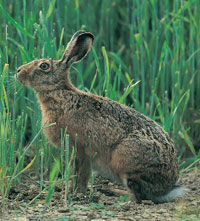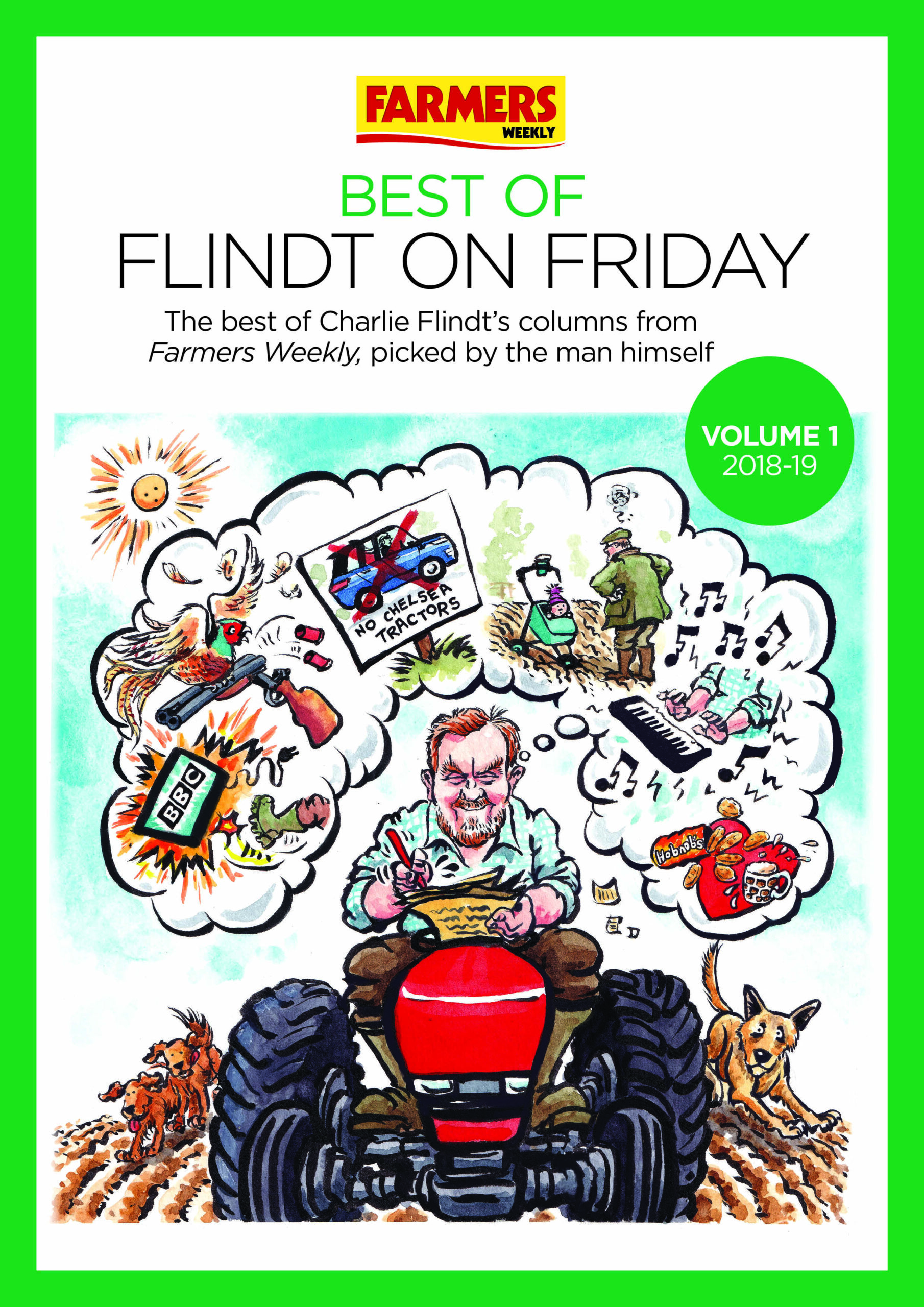CFE: Encouraging brown hares

One of the three themes of the Campaign for the Farmed Environment is to farm for farm wildlife. Mike Abram finds out how farmers can encourage brown hares
If you want to encourage brown hares on your farm, control foxes. Providing a diversity of habitat is also important, particulalrly summer grazing, but predator control has a huge impact in allowing brown hares to thrive.
Foxes are “amazing hunting machines”, Peter Thompson, the Game and Wildlife Conservation Trust‘s biodiversity adviser, says. Living in the open, hares are at risk from foxes, and rely on blending into the background and by remaining still, often in shallow depressions or forms. They have huge eyes and ears to detect predators, and rely on their speed to put distance between themselves and danger.
Even so, foxes are successful predators, particularly of young hares or leverets. Analysis of fox droppings, or scats, by National Environment Research Council in Dorset found 11% of their diet in that county was made up of hares. “That might not sound very much, but 11% is quite a lot when it comes to hare numbers.”
Just how much difference predation can make was graphically shown at GWCT’s Loddington farm in Leicestershire. Monitoring of the farm for hare numbers in the year after GWCT took over in 1991 showed there were around five hares per 100ha.
Stewardship options for brown hares Wild bird seed mixes (EF2) Uncropped cultivated field margins (EF11) Cereal headlands without fertiliser (EF9&10) 6m grass buffer strip with 3m cut annually (EF3) Winter in-field grass areas (EJ5) Pollen and nectar mixes (EF4) Reduced herbicide cereal crops followed by over-wintered stubbles (EF22) Uncropped cultivated areas on arable land (EF13) |
|---|
In 1995, new environmental features were introduced, such as beetle banks and nectar mixes, doubling the number of different habitats on the farm, and a gamekeeper was employed.
In the following years, hare numbers shot up to over 70 hares/100ha, Mr Thompson says. “But what was more important – the changes in habitat or the predator control?”
To find out the gamekeeper was moved on to other duties. “And hare numbers declined to around 12 hares/100ha.”
That isn’t to say habitat isn’t important in encouraging hares, he stresses. “Compared to the neighbouring control farm, we doubled hare numbers by introducing the new habitats.”
Brown hares were introduced into the UK, probably by the Romans because they liked both to eat and chase them, Mr Thompson says. Our native hare is the mountain hare, now largely confined to the Scottish Highlands.
“Brown hares are animals of the open countryside, having evolved on the grassland steppes in central Asia, and have become well-adapted to farmland. They are now found virtually all over the UK, apart from really high areas, and parts of Wales and the south-west of England.”
Studies, such as counts from the national game bag census and Bristol University research, suggest numbers have declined in recent decades, although in parts of East Anglia and Lincolnshire brown hares are thriving. Hares were chosen to be one of the first animals in the Biodiversity Action Plan programme, not because they were rare or endangered, but because they were once very common. The BAP plan proposes that our countryside should support at least 2m hares in winter.
Among the main reasons for their decline in some areas is the specialisation of farming, Mr Thompson suggests. “The loss of rotational ley farming – mixed farms – has meant habitat diversity has been lost.”
Hares like that diversity as it gives them crops to graze all year round. “Ideal farmland for hares is largely arable, with a patchwork of different crops and some grass.”
So why are hare numbers thriving in East Anglia? “It is not wall-to-wall winter cropping generally – a wide range of spring crops, such as sugar beet, vegetable crops, peas and beans are grown that gives that diversity.”
Where winter cropping dominates, such as further south, hare numbers have struggled, he says. “A rotation of winter only crops leaves a period between May and September when there is nothing really for hares to eat. That forces them all into small areas where there is good food, and by doing so, increases disease risk.”
The picture-book scenery of intensively managed grassland, such as in Devon, is also not good for hares, he adds. “Numbers have crashed there.” That’s mostly due to high mortality, from frequent grass cutting and exposure to predators.
But the sorts of habitats within the Entry Level Stewardship scheme options, and being targeted within the Campaign for the Farmed Environment, can encourage hares.
For example, hares love cultivated uncropped headlands, because they can graze on the weeds they find tasty, Mr Thompson says, while conservation headlands and unharvested cereal headlands are also “heaven for wildlife, including hares”. “They are a motorway of food and habitat,” he says.
Floristically-enhanced grass margins are a “mixed salad” for hares, but pollen and nectar mixes have both advantages and disadvantages. “They are a good food source, but typically they are cut in June to encourage a second flowering period for late nectar.”
That mowing can be dangerous for young leverets, so he suggests farmers put the nectar mix next to a footpath. Hares won’t tend to go where they are disturbed during the day, when they lie low, and so it cuts the risk of young hares being caught when the nectar strip is being cut, he reckons.
Other positive options for hares include enhanced buffer strips on intensively managed grassland, reduced herbicide use in cereals followed by stubble, and undersown spring cereals. The key is to improve summer graizing across the farm, he stresses.
Take-up of target CFE options in or out of stewardship schemes would give the brown hare a positive future, Mr Thompson believes.
But proper funding of in-field habitats must remain, he stresses. “Government cut-backs must not hit these schemes. Farmers need some help to put these habitats on farm, as they can mean lower yields, or taking land out of production.”
Predator control within the countryside also needs to be looked at carefully, he says. “Control of foxes must remain viable for farmers and gamekeepers. Foxes and brown hares don’t mix.”
ENCOURAGING BROWN HARES Hares like “patchwork quilt” farmland. Break up large blocks of cereals if possible Use areas of wild brid mix, pollen and nectar and grass areas to create cover and food for hares Hares need quiet, undisturbed cover for raising leverets Planting game cover for pheasants will provide cover and food Don’t shoot hares in late winter unless sure crops are being damaged. A February hare shoot can remove 60% of the breeding stock Cut fields from centre outwards when making silage, so hares can escape machinery Don’t let poaching jeopardise the hare population |
|---|
• Ever seen a white hare? Thought not. Click here so see pictures of an incredibly rare albino hare on Tim Relf’s Field day blog <https://www.fwi.co.uk/blogs/rural-life/2010/10/white-hare.html> .

